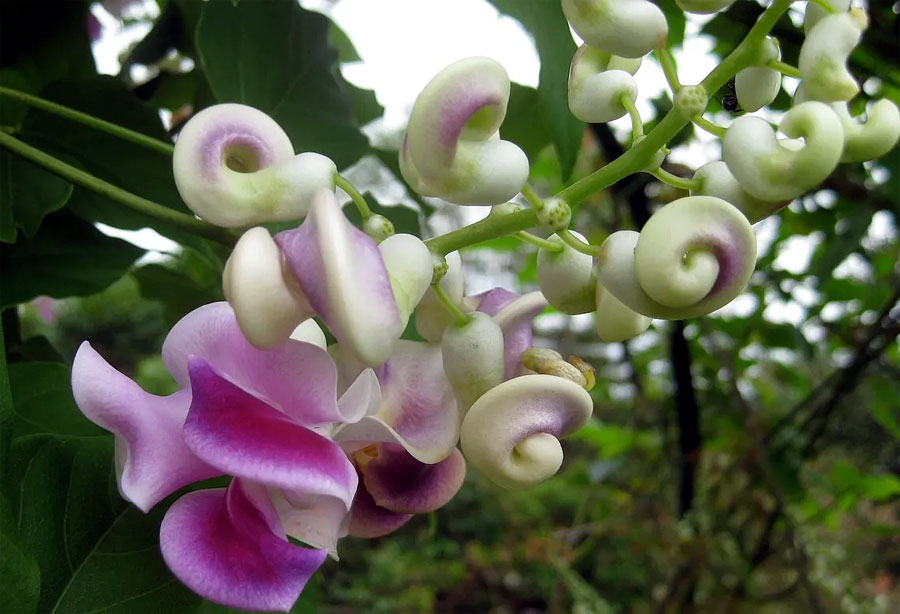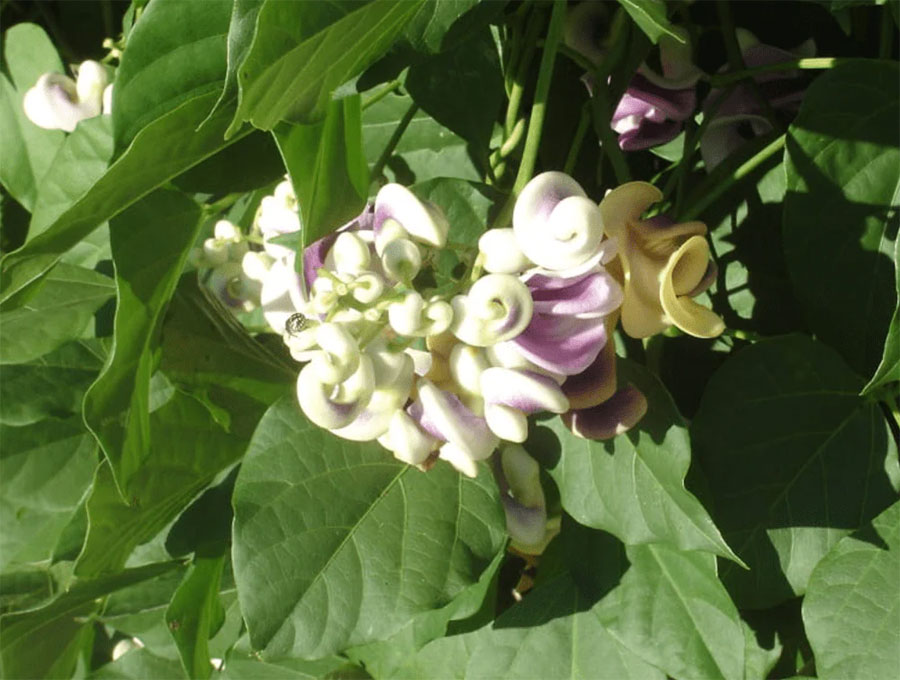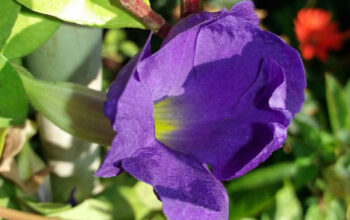Phaseolus Caracalla (Snail Vine)
Phaseolus Caracalla, commonly known as Snail Vine or Corkscrew Vine, is a stunning and unique flowering plant that can add a touch of whimsy to any garden. With its enchanting and fragrant flowers that resemble tiny snail shells, this climbing vine is sure to become a favorite for both novice and experienced gardeners.
By providing the right amount of sunlight, well-draining soil, suitable temperature, and regular watering, you can enjoy the delightful fragrance and captivating appearance of its unique snail-shaped flowers. Remember to fertilize the vine appropriately and support its growth with a trellis or fence.

How to Grow and Care for Phaseolus Caracalla
Incorporating Phaseolus Caracalla into your garden can be a rewarding experience. With proper care, attention, and a touch of patience, you can witness the stunning transformation of spiral-shaped flowers adorning your outdoor space. If you don’t have much space for a garden, you can still grow Phaseolus Caracalla in containers. Just make sure to use a big pot with proper drainage and provide a trellis for the plant to grow vertically.
Since Snail Vines are vigorous climbers, provide sturdy trellises or supports for them to cling to. As they grow, gently guide the vines along the trellis to help shape their growth. Consider planting your Snail Vine alongside other climbers or trailing plants. Combining it with morning glories or sweet peas can create a visually stunning arrangement.
It is recommended to stay vigilant for common garden pests such as aphids and whiteflies. It’s important to regularly examine the foliage and take prompt action to address any infestations by using insecticidal soap or neem oil. Additionally, ensure proper spacing between plants to reduce the risk of fungal diseases.

Growing from seeds
Mix 4 parts potting soil with 1 part perlite in a pot with 3 inches of depth. Place the seed in the soil and cover it with the soil. When germination begins, keep the pot inside for six weeks. Observe the pot and cover it lightly with a clear plastic sheet. If the soil begins to dry out, water it. Immediately after germinating, place the pot where it receives four to six hours of bright sunlight each day. During the warm months, plant the seedlings outdoors in full sun or partial shade, six inches apart, in soil that drains quickly.
Sunlight
Ensure that Snail Vines receive a minimum of 6 hours of sunlight every day, as they thrive in sunny conditions. Placing them in a spot with morning sun and afternoon shade can create an ideal environment for their growth.
Watering
When watering your plants, it’s important to moderate and not overdo it. Make sure to let the top inch of soil dry out before watering again. During hotter months, you might need to water more frequently, ensuring the soil remains consistently moist but not waterlogged.
Soil
For optimal growth of your Snail Vine, use soil that drains well and is enriched with organic matter. A blend of potting soil and compost is recommended for the ideal growing medium. For optimal conditions, it is recommended that the pH level be slightly acidic to neutral.
Temperature and Humidity
Phaseolus Caracalla thrives in warm temperatures. Maintain an environment between 65 and 80 degrees Fahrenheit (18 and 27 degrees Celsius) during the growing season. To ensure the health of your vines, it’s important to shield them from frost, as they are highly susceptible to the negative effects of cold weather. Snail vine plants should live in humid, tropical environments, and they will die if they are exposed to cold weather.
Fertilizer
To encourage robust growth and prolific flowering, fertilize your Phaseolus Caracalla every 4-6 weeks during the growing season. For optimal flowering, it is recommended to use a balanced and water-soluble fertilizer that has a higher phosphorus content.
Pruning
It is important to prune your Phaseolus Caracalla to preserve its well-being and aesthetic appeal. Regularly trim away dead or damaged growth to encourage new growth and enhance air circulation. If you reside in a region with a colder climate, it’s possible to move your snail vine inside your home for the winter season. Prune the vines and relocate the potted plant to a well-lit and cool room.
Read also:
How to Grow and Care Bleeding Hearts Plant. Anthurium Plants Growing in Pots. Primrose Flowers Growing from Seeds. Growing and caring about Crossandra flowers. Best flowers for Bees and Butterfly garden. Lily plant (Lilium) growing in containers. Celery growing and caring guide. Plumeria planting, growing, and care guide.
For pin:





